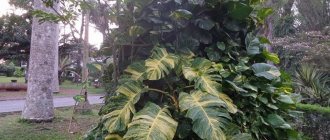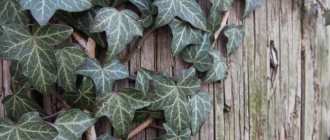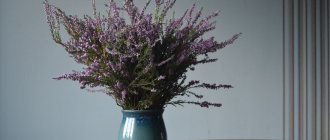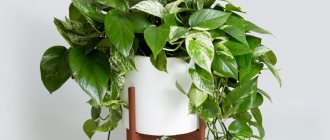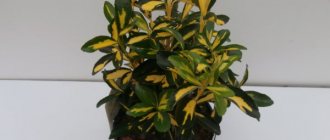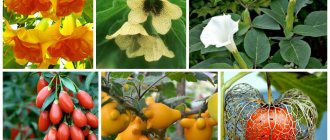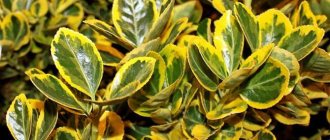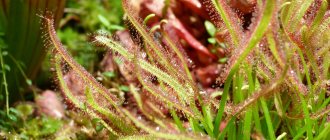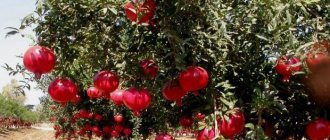Scindapsus is a flower whose second name is epipremnum. It originally grew in Southeast Asia, Africa, and Polynesia, from where it was distributed throughout the world. In open ground, the bush actively spreads along the ground, reaching 15 m in height. At home, its size is much smaller. People also call the flower by other names, for example, devil's ivy, devil's ivy. Decorative foliage plants do not require careful care; it is enough to follow the basic rules. Then the evergreen epipremnum will delight the owner for a long time.
Description
The scindapsus flower is characterized by the following qualities:
- a perennial evergreen species that actively grows on other trees that act as a support;
- divided into 30 species, but only a few of them are grown at home;
- many species were developed through selection and hybridization;
- the leaves are oval with a sharp tip, have a variety of colors, may have spots or streaks, and contain a large vein in the center;
- flowers are observed only during natural growth; large ears with a veil are formed;
- domestic varieties do not bloom, so the decorative effect is based only on vines containing leaf blades;
- the flower is placed in hanging pots, next to which supports are installed to support the vine;
- to achieve a large, lush epipremnum, 2-4 cuttings are placed in a pot at once.
The scindapsus liana has several types of roots:
- air, attached to a support;
- air, designed to produce oxygen;
- underground.
Many novice gardeners are trying to figure out the differences between scindapsus and epipremnum. In fact, they are the same flower with different names.
Rules of care
Scindapsus is undemanding in care, but for good growth and beautiful leaves you need to follow simple rules.
Lighting
What the liana does not like is direct sunlight. It can grow in the shade, but with a lack of lighting, the variegated leaves lose their decorative effect and become smaller. With a catastrophic lack of light, the vine begins to lose leaves, which exposes the shoots and can lead to the death of the plant. Traditionally, scindapsus is placed in a hanging pot on the wall. With this arrangement, it is easier to choose a place with the right lighting. If the window faces south, then it is recommended to place the pot with scindapsus at a distance of one and a half to two meters from the window. When placed in the shade, artificial lighting can be provided.
Temperature
The liana grows well in a wide temperature range from eighteen to twenty-five degrees. If the temperature in summer exceeds the specified value, then it is necessary to humidify the air, otherwise the leaves will begin to fall off. In the cold season, the temperature should not drop below sixteen degrees. The liana can withstand a short-term decrease of up to twelve degrees, but it is better not to allow this.
Watering and humidity
In summer, scindapsus needs regular and frequent watering. But at the same time, the top layer of soil should dry to a depth of two to three centimeters before the next watering. Water with plenty of settled water at room temperature. After half an hour, excess water is drained from the pan to avoid stagnation of water and rotting of the roots.
Since scindapsus is native to tropical forests with high humidity, it is recommended to increase the humidity by daily spraying in the summer and less frequently in the winter, during heating operation. It is recommended to wipe the leaves with a damp sponge or shower in the summer. But showering is difficult for plants with long shoots located on the wall. Another method of hydration is proposed for them. The liana is initially planted in a clay pot, which is distinguished by its ability to absorb moisture. The pot is wrapped in sphagnum moss and placed in a larger wall planter. By keeping the moss moist, without standing water, you can increase the humidity around the vine. In winter, it is necessary to place scindapsus away from heating radiators.
Top dressing
To feed scindapsus, mineral fertilizers for decorative deciduous plants are used. Fertilizer application frequency:
- from spring to autumn - once every two weeks;
- in winter - once every month.
This may be interesting: Syngonium - home care
Bush formation
The formation of the scindapsus crown has its own characteristics. The shoots of the vine grow quickly, so it is recommended to prune them in the spring. Although such a procedure will not lead to the formation of side shoots or the formation of new ones. To obtain a dense bush, several cuttings are planted in one pot.
To add decorativeness, supports of various shapes are used: arches, ladders, wire or rope fastenings. Young shoots are directed along them, which are attached to the support by aerial roots. It is not recommended to disturb old shoots by moving them from place to place. This can lead to damage to the shoots and the need to prune them.
Transfer
Young plants are transplanted in the spring for the first three years. The diameter of the new pot should be three to four cm larger than the old one. The size of the scindapsus is suitable for a shallow, wide pot in which several cuttings can be planted. If the plant is older than three years, then replanting is carried out once every three years. If the plant has grown long shoots and you do not plan to trim them, then it is better not to disturb the vine unless necessary. Otherwise, the fragile shoots break off during transplantation, and the vine loses its decorative effect.
Good to know! To speed up root growth and get a plant with a powerful root system, it is recommended to shorten the roots by one third during replanting. The cut areas are sprinkled with crushed activated carbon.
The soil
The decorative vine grows well in loose, light soil. To prepare it yourself, you will need to mix the following ingredients in equal parts:
- turf land;
- leaf soil;
- peat;
- sand.
To add additional looseness, perlite or fine expanded clay and crushed pine bark are added to the mixture. In terms of acidity, the soil should be slightly acidic.
For planting scindapsus, a ready-made earthen mixture for decorative foliage plants is suitable.
Useful properties of scindapsus
Many gardeners grow indoor scindapsus, as it has a variety of useful qualities:
- decorative properties, decoration of home rooms;
- air purification due to the active process of photosynthesis;
- indoor air humidification;
- elimination of harmful electromagnetic waves emanating from household appliances;
- antiseptic effect to destroy fungi and bacteria living in the air.
In addition to a lot of useful properties, the epipremnum flower fits beautifully into any interior. It does not require careful care and grows quickly if the growing rules are followed.
The benefits and harms of the plant
The tropical liana purifies the air and is considered a beneficial plant for the home. It neutralizes toxic compounds such as carbon dioxide, benzene, toluene and many others. Liana successfully absorbs formaldehyde, ammonia compounds and helps purify the air. The disadvantages include the fact that the scindapsus flower contains poisonous juice, which is dangerous for pets and birds. It is not recommended to place a pot with a plant low if there are pets in the house.
The beauty of ivy is captivating; it creates a feeling of comfort, beauty and a pleasant atmosphere in the house, which is why the flower is readily purchased for living rooms and offices. But, before starting a scindapsus, it is recommended that you familiarize yourself with all the signs associated with it. The best decision is to rely on intuition, which will tell you whether a particular person should keep a tropical liana in a living room or whether it is better to leave this plant in the office.
Types with photos and names
A wide variety of Scindapsus species have been identified. But 4 of them are often grown indoors. All types and varieties are similar to each other, differ in the color of the leaf plates and the height of growth. There is a wide variety, for example, scindapsus joy or enjoy, trebi, pothos, argureus, marble, silver. But not all of them are grown at home. More often, flower growers prefer varieties that do not require careful care and do not lose their decorative properties.
Siamese scindapsus (Scindapsus siamense)
Scindapsus siamese photo
Scindapsus siamese has the following differences from other varieties:
- asymmetrical sheet plates;
- large sizes of green sheets on which spots, stripes, streaks with other shades (yellow, silver, light green) are localized;
- The liana originally grew in southeast Asia, from where it was transported to Europe.
There are rare species of Siamese scindapsus, which are of great value and are found only in some gardeners:
- troyba - has large leaves with a sharp edge, grows extremely slowly;
- perakensis - green leaf plates with a uniform structure, growing in the shape of an arrow, with leaf appendages in the form of wings.
Where is the best place to keep
Signs and superstitions about various types of scindapsus are considered unfavorable for the home, family, and married couple. It is recommended to decorate offices, study rooms, creative studios and workshops with plants. It will help those who have not yet decided on a profession to choose a field of activity. Stimulates emotional reboot during depression, allows you to find inner harmony.
If a married woman is given a scindapsus, she needs to keep it outside the house, otherwise she can forget about her personal life. For a girl, such a gift promises a long time to meet her other half; the energy of the plant literally repels potential suitors.
The exotic vine can be used in medical institutions. It purifies the air and promotes the recovery of patients. You can decorate the open areas of bistros and restaurants. The plant will attract new customers and contribute to business prosperity.
Caring for scindapsus at home
Home care involves choosing the right location, quality temperature, humidity, soil, and watering. Be sure to add fertilizing. If all requirements are met correctly, growth will be abundant and diseases will not occur.
Illumination
Scindapsus in a pot
To stimulate photosynthesis in the leaf blades, abundant sunlight is required, but the rays should not spread directly. Otherwise, it will lead to burns and deterioration of decorative properties. If there is not enough light, the leaves will fall off, exposing the shoots. Therefore, it is recommended to place the bush according to the rules of care:
- installation on windows on the south-east or south-west side;
- prohibition on location from the north or south, this equally negatively affects growth;
- if the epiprenum cannot be hidden from direct sunlight, install blinds or curtains with a translucent texture.
It is better not to place the flower on the windowsill; it should be 1-1.5 m from the window. This will protect him from burns, but will maintain the flow of light. If growth is observed in a cloudy area, you can use a phytolamp for additional lighting. The total daylight hours should be 10-12 hours.
Temperature
Scindapsus loves warm temperatures, but it should not be too hot, otherwise moisture will evaporate from the surface of the leaves and they will become lethargic. The following recommendations for temperature care are distinguished:
- period of active growth in spring and summer – 18-25 degrees;
- the rest period in autumn and winter is 18-20 degrees.
In summer, the temperature should not rise above 25 degrees. If this happens, abundant moisture and frequent ventilation of home rooms is required. In winter, when caring, you can only slightly reduce the temperature, but below 16 degrees is not recommended. Life processes in the epipremnum will slow down, the vegetative mass will become sluggish.
Air humidity
If a grower wants to achieve elasticity and good shape of the vegetative mass of scindapsus, it is necessary to maintain the humidity at 60-70%. To accomplish this, different methods of moisturizing are used, each of which is recommended in a certain season:
- in spring and summer - spraying scindapsus with filtered water from a spray bottle, placing a tray with liquid under the flower, wiping the leaf plates with a damp sponge;
- autumn, winter - turn on the humidifier only if the heating devices start working, the rooms become too stuffy.
Reproduction of scindapsus
To propagate a home bush, there are 2 methods - cuttings and layering. This will allow you to quickly grow epiprenium and achieve the propagation of a healthy culture. It is necessary to follow all the rules of reproduction and care at home so that the procedure does not cause the death of the mother. It is better to propagate scindapsus in early spring before active growth, so as not to slow down growth.
Cuttings
Epiprenium cuttings are obtained through the pruning process. Cut off a healthy vine that has no damage. The cut areas are treated with charcoal to prevent the formation of an infectious focus there. Further propagation of scindapsus by cuttings is carried out in stages:
- the cutting is placed in water, where a little Epin or Kornevin is added, which stimulate root growth;
- the water is changed periodically so that the shoot does not begin to rot;
- As soon as a root has formed, it is transplanted into an individual pot with a nutrient mixture.
Instead of water, you can immediately use nutritious soil consisting of peat and sand. Then the root growth stimulator is applied directly to the tip of the plant. Install plastic film to create greenhouse conditions; the temperature should be maintained at 20-22 degrees. Transplantation is carried out when growth has appeared, which means root formation.
Possible problems during cultivation
If the grower is inexperienced, problems may arise in the process of caring for and growing a home bush:
- falling leaves - lack of moisture or fertilizer, location of the scindapsus in the path of a draft;
- drying of the tips of the leaf blades - insufficient watering or humidity in the room;
- slow growth - lack of fertilizers or lack of replanting, which causes soil depletion;
- brown, black spots - excessive watering, which causes abundant proliferation of fungi, especially if the temperature in the room is low.
If you normalize all the rules of care, the problem will quickly disappear. But in advanced situations, the bush may die completely.
Diseases and pests
In scindapsus, diseases develop if improper care is taken. It is important to identify deviations in a timely manner in order to carry out treatment correctly.
- Black spots on leaves. The problem is overwatering. It is necessary to replant the bush, cutting off all the rot on the roots. Additionally, the plant is treated with a fungicidal preparation to reduce the growth of fungi.
- Dried tips of leaves. Epiprenum is located near heating devices, so it begins to dry out quickly. It accelerates if watering is insufficient. You need to turn on the humidifier and frequently spray the leaves with a spray bottle.
- Massive leaf fall. It develops due to strong drafts or insufficient sunlight. The homemade scindapsus bush is installed in a new location where there is more sunlight.
- Loss of leaf variegation. It develops due to lack of lighting. You need to place the bush on the southwest and southeast sides or use a phytolamp.
- Rolling the tips of the leaves into a tube. The florist uses low-quality water. It contains many salts and chemical components that negatively affect the plant mass. Pre-filtration or boiling is required.
- Increasing the distance between sheet plates. The florist uses organic fertilizers that are aimed at the appearance of flowers. Mineral preparations are used, diluting the required concentration by 2 times.
When caring for epiprenum, one should not forget about lighting, watering, and fertilizing. All these points must be followed according to the rules, without overdoing it.
In addition to various diseases, scindapsus may develop pests. Insects often migrate from other species or when a home flower is placed outside in the summer. The following insects are dangerous to epiprenum:
- aphids are small white insects that form holes or yellow spots on leaves;
- mealybug - leads to the formation of round white growths, shaped like cotton wool;
- spider mite - the formation of small cobwebs between the stems.
For treatment, the bush is initially treated with a solution of laundry soap. This will help remove most insects and wash them off the surface. Then an insecticide is applied that kills most pests. Its concentration is calculated according to the instructions. Treatment is continued for at least a week to destroy all eggs and larvae, otherwise a relapse will occur.
Scindapsus is an exotic plant that is currently used for home cultivation. If you properly care for it, problems and diseases will not arise. All the gardener needs to do is select the variety he likes, water, replant, and fertilize.
Signs depend on the plant variety
Breeders have developed many varieties of the flower . But most often gardeners grow:
Pictus (called painted or spotted) . Excellent resistance to pathogens and harmful insects. It has silver inclusions and white edging on the leaves. It grows up to 1 m, and its egg-shaped leaves form a lush crown. This is the best choice for large spaces. Creates a positive business atmosphere in the office.
Golden or aureum . In America it is called the “golden lotus” for its yellow stripes shining in the sun. It has a length of up to 2.5 m. One drawback is that this gorgeous handsome man is very “weak” in relation to all kinds of diseases . There is a belief that it helps in the fight against blues, gives physical and creative strength, and financial well-being.
N'Joy is the newest addition to the private greenhouse scene. A basket a la flowerpot is suitable for growing. The small curly stem is decorated with dense leaves covered with silvery spotting. This type brings positive energy into the house and removes dust and toxins from the surrounding area.
Exotics are distinguished by double leaf blades . One part of it is larger and the vein in the middle has a beautifully curved shape. This plant will not only decorate the interior, but also soothe, giving peace to the soul.
Neon or Golden Neon . Its peculiarity is the long petioles of delicate light green leaves. Due to its rapid growth, the stem constantly needs pruning. The brightness of the foliage has a mesmerizing effect, releasing bactericidal essential oils . Suitable for home and healthcare institutions.
Scindapsus is simply created for positive emotions and comfortable coziness in the home and office. And even though the goddess Hera once disliked this vine, its positive properties clearly outweigh all the negative superstitions attributed to it.
Subscribe to our Social networks
